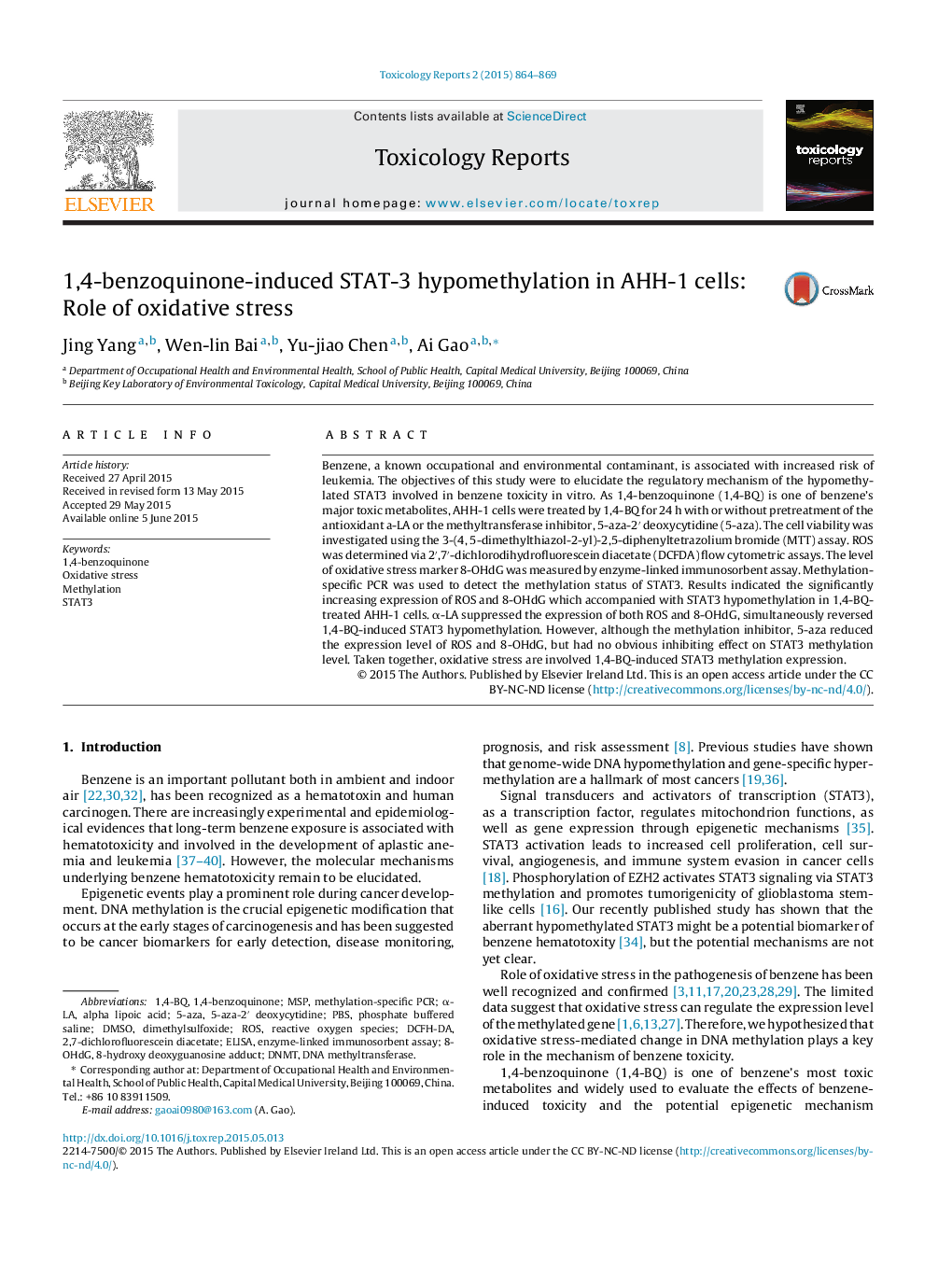| Article ID | Journal | Published Year | Pages | File Type |
|---|---|---|---|---|
| 2572282 | Toxicology Reports | 2015 | 6 Pages |
Benzene, a known occupational and environmental contaminant, is associated with increased risk of leukemia. The objectives of this study were to elucidate the regulatory mechanism of the hypomethylated STAT3 involved in benzene toxicity in vitro. As 1,4-benzoquinone (1,4-BQ) is one of benzene’s major toxic metabolites, AHH-1 cells were treated by 1,4-BQ for 24 h with or without pretreatment of the antioxidant a-LA or the methyltransferase inhibitor, 5-aza-2′ deoxycytidine (5-aza). The cell viability was investigated using the 3-(4, 5-dimethylthiazol-2-yl)-2,5-diphenyltetrazolium bromide (MTT) assay. ROS was determined via 2′,7′-dichlorodihydrofluorescein diacetate (DCFDA) flow cytometric assays. The level of oxidative stress marker 8-OHdG was measured by enzyme-linked immunosorbent assay. Methylation-specific PCR was used to detect the methylation status of STAT3. Results indicated the significantly increasing expression of ROS and 8-OHdG which accompanied with STAT3 hypomethylation in 1,4-BQ-treated AHH-1 cells. α-LA suppressed the expression of both ROS and 8-OHdG, simultaneously reversed 1,4-BQ-induced STAT3 hypomethylation. However, although the methylation inhibitor, 5-aza reduced the expression level of ROS and 8-OHdG, but had no obvious inhibiting effect on STAT3 methylation level. Taken together, oxidative stress are involved 1,4-BQ-induced STAT3 methylation expression.
